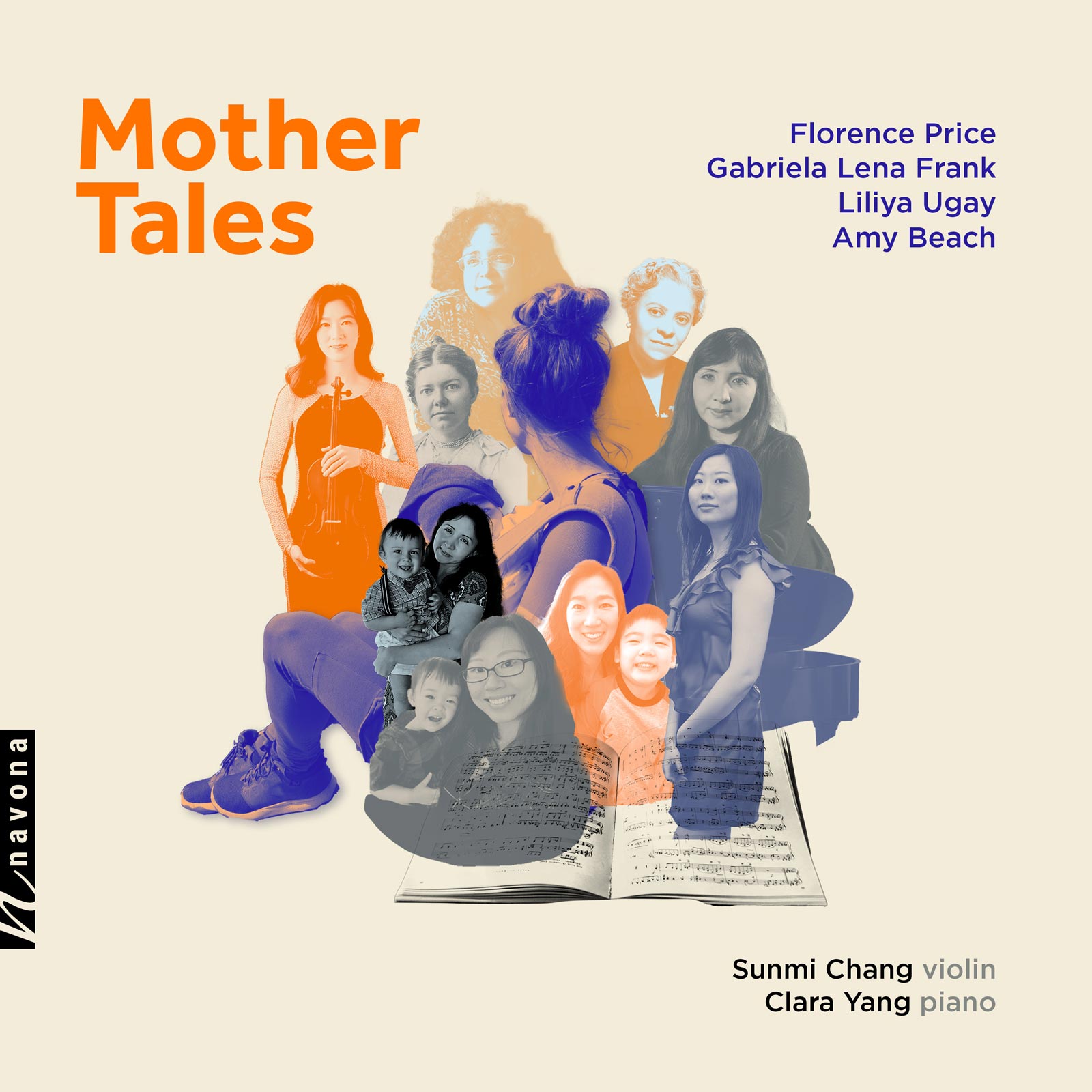Mother Tales
Florence Price composer
Gabriela Lena Frank composer
Liliya Ugay composer
Amy Beach composer
Sunmi Chang violin
Clara Yang piano
Against the backdrop of the pandemic, violinist Sunmi Chang and pianist Clara Yang embarked on this meaningful project. MOTHER TALES is an album that pays tribute to four remarkable women composers – Florence Price, Gabriela Lena Frank, Liliya Ugay, and Amy Beach. Notably, the album shares the same title as Liliya Ugay’s commissioned work, an exquisite and heartwarming piece that reflects on motherhood. However, in this project, the concept of a “mother” transcends biological boundaries, encompassing all those who have had a profound influence and nurturing presence in the lives of others.
Listen
Stream/Buy
Choose your platform
Track Listing & Credits
| # | Title | Composer | Performer | |
|---|---|---|---|---|
| 01 | Fantasie No. 1 in G Minor for Violin and Piano | Florence Price | Sunmi Chang, violin; Clara Yang, piano | 4:16 |
| 02 | Sueños de Chambi: Snapshots for an Andean Album: I. Harawi de Quispe | Gabriela Lena Frank | Sunmi Chang, violin; Clara Yang, piano | 3:41 |
| 03 | Sueños de Chambi: Snapshots for an Andean Album: II. Diablicos Puneños | Gabriela Lena Frank | Sunmi Chang, violin; Clara Yang, piano | 3:07 |
| 04 | Sueños de Chambi: Snapshots for an Andean Album: III. Responsorio Lauramarqueño | Gabriela Lena Frank | Sunmi Chang, violin; Clara Yang, piano | 4:12 |
| 05 | Sueños de Chambi: Snapshots for an Andean Album: IV. P’asña Marcha | Gabriela Lena Frank | Sunmi Chang, violin; Clara Yang, piano | 3:09 |
| 06 | Sueños de Chambi: Snapshots for an Andean Album: V. Adoración para Angelitos | Gabriela Lena Frank | Sunmi Chang, violin; Clara Yang, piano | 3:00 |
| 07 | Sueños de Chambi: Snapshots for an Andean Album: VI. Harawi de Chambi | Gabriela Lena Frank | Sunmi Chang, violin; Clara Yang, piano | 4:08 |
| 08 | Sueños de Chambi: Snapshots for an Andean Album: VII. Marinera | Gabriela Lena Frank | Sunmi Chang, violin; Clara Yang, piano | 2:26 |
| 09 | Mother Tales: I. Croon | Liliya Ugay | Sunmi Chang, violin; Clara Yang, piano | 6:04 |
| 10 | Mother Tales: II. Perpetual Delight | Liliya Ugay | Sunmi Chang, violin; Clara Yang, piano | 4:32 |
| 11 | Sonata for Violin and Piano, Op. 34: I. Allegro moderato | Amy Beach | Sunmi Chang, violin; Clara Yang, piano | 9:20 |
| 12 | Sonata for Violin and Piano, Op. 34: II. Scherzo | Amy Beach | Sunmi Chang, violin; Clara Yang, piano | 4:32 |
| 13 | Sonata for Violin and Piano, Op. 34: III. Largo con dolore | Amy Beach | Sunmi Chang, violin; Clara Yang, piano | 8:19 |
| 14 | Sonata for Violin and Piano, Op. 34: IV. Allegro con fuoco | Amy Beach | Sunmi Chang, violin; Clara Yang, piano | 8:16 |
Recorded December 4-6, 2022 at Moeser Auditorium, University of North Carolina at Chapel Hill, in Chapel Hill NC
Recording Session Producer and Engineer Nathaniel Yaffe
Executive Producer Bob Lord
A&R Director Brandon MacNeil
VP of Production Jan Košulič
Audio Director Lucas Paquette
VP, Design & Marketing Brett Picknell
Art Director Ryan Harrison
Design Edward A. Fleming
Publicity Aidan Curran
Artist Information

Sunmi Chang
As the laureate of the 2007 International Markneukirchen Violin Competition, and the 2007 Sion-Valais International Violin Competition, Sunmi Chang has performed widely and to acclaim throughout North America and Europe as a solo artist and chamber musician. In 2008, she was the soloist of the Asian Tour to Seoul, Beijing, and Shanghai with the Yale Philharmonia, performing the Beethoven Violin Concerto.

Clara Yang
Clara Yang has performed in notable venues such as Carnegie Hall, the Forbidden City Concert Hall (Beijing), and the Auditorio Nacional de Música (Madrid). She is currently Associate Professor of Piano and Head of Keyboard Studies at UNC-Chapel Hill. As a soloist, she has collaborated with renowned conductors such as Vladimir Ashkenazy, Long Yu, Carl St. Clair, and Grant Llewellyn. She performed alongside Philip Glass in the Glass at 80 Festival, and she performed the world premiere of distinguished composer Chen Yi’s piano concerto with the China Philharmonic Orchestra in Beijing.

